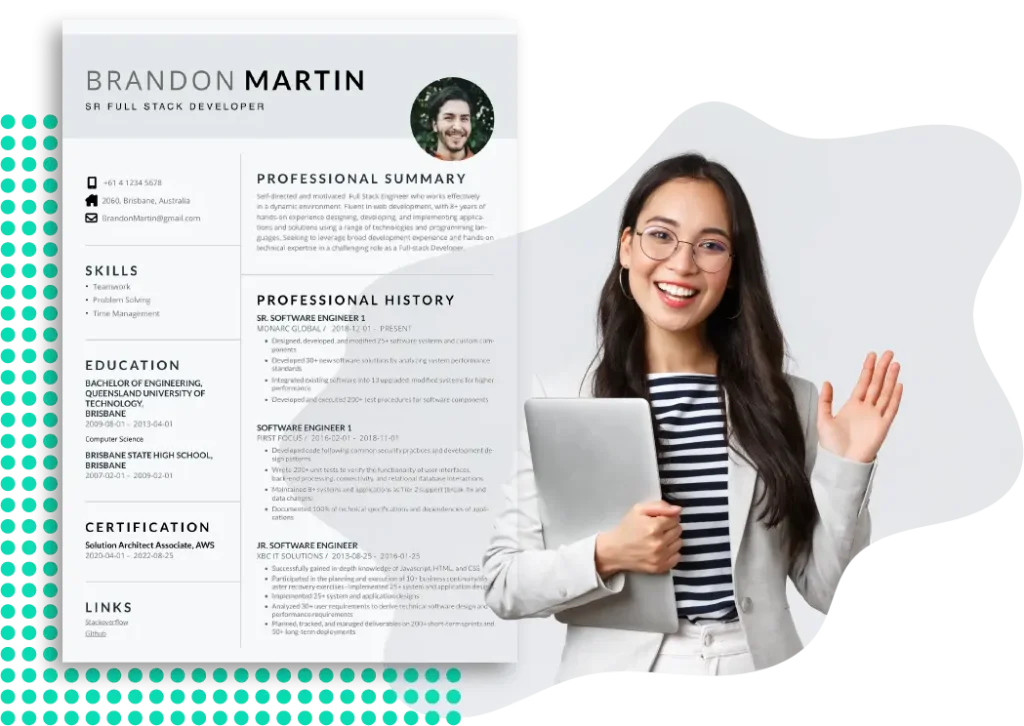A professional resume outline is the foundation of a successful job search in 2025. With hiring managers scanning resumes in seconds, format becomes a tool to guide their attention. A clean and tailored layout ensures your strongest points shine through immediately.
Whether you’re a fresh graduate or a mid-career professional, your resume’s structure must support your story. The outline you choose should match your career stage, goals, and the role you’re applying for. Customizing your format gives you a competitive advantage.
This article breaks down the best resume outlines suited for various job seekers. You’ll discover what each layout offers, who it benefits, and how to apply it effectively. The goal is to help you create a resume that not only informs but also impresses.
Chronological Format for Experience
Highlights Career Progression
This format presents your job history in reverse, starting with the most recent role and moving backward. It allows employers to quickly understand your career growth, making it perfect for professionals with consistent work experience. The structure offers a clear narrative and simplifies how recruiters scan your journey. It gives immediate insight into promotions, job changes, and increasing responsibilities. For candidates with a stable background, it ensures their path appears organized and upward.
- Shows your most recent role first
- Makes career growth easy to trace
- Works best for consistent job history
Emphasizes Job Responsibilities
Chronological resumes focus on job titles, company names, and specific duties under each role. They allow you to provide detailed accomplishments within each position. Employers can see how your responsibilities evolved over time. This format offers depth for those with extensive experience. It builds credibility by showcasing actual results.
Functional Format for Skills
Focuses on Core Strengths
This layout emphasizes key skills instead of specific job titles or dates. It allows you to showcase abilities like problem-solving, project management, or creativity. You explain where and how you used those strengths across roles. This format suits people with non-traditional work paths. It presents your capabilities upfront.
Hides Work Gaps Effectively
Functional resumes draw attention away from employment dates and gaps. Instead of focusing on timelines, they emphasize how you’ve used relevant skills across various roles and situations. This structure allows you to guide the narrative, highlighting capability rather than chronology. Employers are more likely to notice your strengths instead of any inconsistencies. It’s a smart option for candidates with breaks or unconventional paths.
- Skills are grouped instead of jobs
- Dates are not emphasized visibly
- Ideal for career returnees or switchers
Hybrid Format for Balance
Combines Skills and Timeline
This format begins with a summary of core skills and achievements. Below that, it lists job history in reverse order. You combine the flexibility of a functional format with the structure of a chronological one. It lets you present both strengths and professional history effectively. This approach balances clarity and impact.
Fits Many Job Types
The hybrid structure works across industries, from tech and marketing to healthcare and education. It gives room to emphasize transferable skills while still showing where you’ve worked. You can customize sections for the role you’re targeting. This adaptability makes it suitable for many levels of experience. Recruiters find it easy to read.
Tells a Cohesive Story

This resume format allows you to begin with your strongest skills and follow up with practical examples from your experience. By presenting both your strengths and a clear timeline, you build a compelling narrative that aligns your qualifications with employer needs. It creates consistency between what you say and what you’ve done. Recruiters can quickly understand your journey and the impact you’ve made. The format is ideal for complex or non-linear career paths.
- Demonstrates alignment between skills and roles
- Builds trust through proof-based storytelling
Read More: Top Resume Format for College Graduates
Targeted Format for Roles
Matches Role Requirements
A targeted resume is tailored to fit one specific job description. Every section, from the summary to achievements, reflects what the company is asking for. You align your language and focus with their expectations. This proves you understand the role deeply. It shows initiative and research.
Performs Well in ATS
Since targeted resumes contain exact phrases from the job listing, they often rank higher in applicant tracking systems. These systems filter applications based on keyword relevance. A targeted format improves your chances of getting seen. It ensures compatibility with both digital and human readers. That raises your shortlisting potential.
One-Page Format for Impact
Keeps Things Concise
The one-page format is perfect for candidates who need to make a quick impression. It condenses your qualifications into a single, easy-to-read page, making it ideal for interns, recent graduates, or professionals with limited experience. This format emphasizes clarity, forcing you to remove unnecessary content and focus only on essentials. It’s direct, organized, and helps recruiters find relevant details without effort. In fast-paced hiring settings, it’s a smart and efficient approach.
- Ideal for candidates with under 5 years of experience
- Focuses only on essential skills and achievements
- Saves recruiter time with faster review process
Highlights Summary and Skills
Typically, this format opens with a summary followed by a short list of core strengths. You then list essential experience and education in brief. The goal is to give a complete profile quickly. Each section is optimized for clarity. It works well in fast-paced industries or high-volume hiring.
Creative Format for Designers
Uses Visual Branding
Creative resumes incorporate graphic elements such as icons, color schemes, or infographic layouts. This design shows your artistic personality and branding skills before any content is read. The format catches the eye instantly. As long as it remains professional, it can be highly impactful. It creates a lasting impression.
Integrates Work Samples
Many creative resumes link to digital portfolios or include visuals of past work. These elements make your achievements more tangible. Recruiters don’t just read about your projects they see them. This brings depth to your application. It validates your design skills visually and functionally.
Works for Creative Roles

This layout is most effective in industries that emphasize design, storytelling, or innovation. Employers in these spaces are drawn to resumes that feel as original as the roles themselves. A creative format allows your application to act as a visual extension of your work. It not only showcases content but also demonstrates how you approach presentation. This format synchronizes your personal brand with the employer’s expectations.
- Ideal for roles in UX/UI, graphic design, and content creation
- Preferred by companies that value unique visual identity
- Helps set your tone before the interview begins
FAQs
Which resume format is most popular in 2025?
The hybrid format is most recommended in 2025 for its flexibility and balanced structure. It allows you to highlight key skills and relevant work history together.
Is a two-page resume acceptable today?
Yes, especially if you have over five years of experience. Two pages give room to explain your achievements clearly without crowding your layout.
Should I use the same resume everywhere?
No, customizing your resume for each job application is essential. It shows employers that you’ve read the description and understand what they need.
What’s the best way to pass ATS filters?
Use job-specific keywords, keep formatting simple, and avoid using charts or columns. Stick to clear headings and standard fonts for easy scanning.
Are creative resumes okay for corporate jobs?
Not usually. Creative resumes are best for design-based roles. For corporate or traditional jobs, stick with professional and clean layouts to stay aligned.
Conclusion
In 2025, the right resume outline can shape your job search success. Whether you’re presenting your work history, highlighting strong skills, or showcasing creativity, your format must support your story. Each layout offers its own advantages depending on your career goals. By selecting the structure that fits your background, you ensure your resume leaves a lasting impression and earns the attention it deserves.

